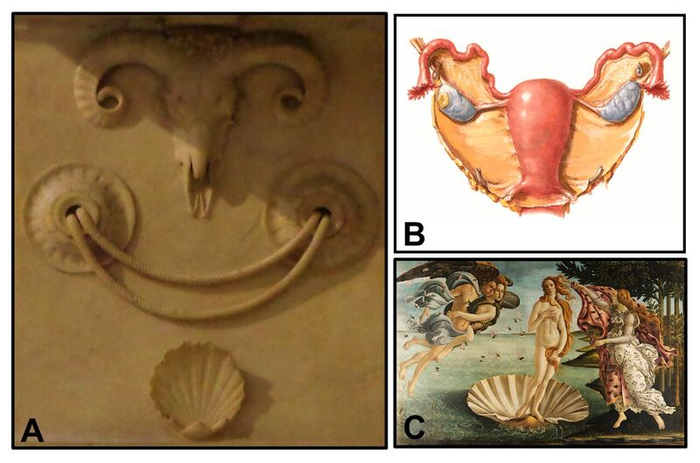 At present, there is some debate over the frescoes. Michelangelo’s frescos symbolize the teachings of the Catholic Church at the time or there are other meanings hidden in the images? Furthermore , there is speculation concerning the image of the brain inserted in the fresco known as “The Creation of Adam,” which contains anatomic features of the midsagittal and lateral surfaces of the brain. Within this background, the research group guided by Deivis de Campos demonstrate, in an article published in the review Clinical Anatomy, mathematical evidence that Michelangelo painted “The Creation of Adam” using the Divine Proportion/Golden Ratio .
At present, there is some debate over the frescoes. Michelangelo’s frescos symbolize the teachings of the Catholic Church at the time or there are other meanings hidden in the images? Furthermore , there is speculation concerning the image of the brain inserted in the fresco known as “The Creation of Adam,” which contains anatomic features of the midsagittal and lateral surfaces of the brain. Within this background, the research group guided by Deivis de Campos demonstrate, in an article published in the review Clinical Anatomy, mathematical evidence that Michelangelo painted “The Creation of Adam” using the Divine Proportion/Golden Ratio .
Thus, according to the evidence shown in this article, the researchers suppose that the beauty and harmony recognized in all Michelangelo’s works may not be grounded only on his knowledge of human anatomical proportions, but on the fact that the artist also knew anatomical structures that obey to the Golden ratio .
Furthermore it seems that Michelangelo carved pagan symbols of the female sex organs in the Medici Chapels in Florence just as he painted them in the Sistine Chapel in the Vatican, the team from Brazil’s Porto Alegre University maintain in a new study. Skulls, shells and spheres suggest the shapes of the uterus and Fallopian tubes. The new study focuses on three symbols carved beside the tombs of Giuliano and Lorenzo dei Medici: skulls of cattle and rams, spheres connected by cords, and a shell. According to the Brazilian experts, their shape is a coded reference to that of the uterus and the Fallopian tubes, organs of female reproduction.
The Renaissance genius inserted them into his work with the intention of “representing the capacity for rebirth and regeneration between life and death,” affirmed the team.
Carlo Marino
